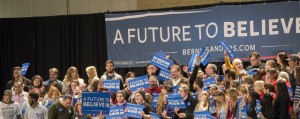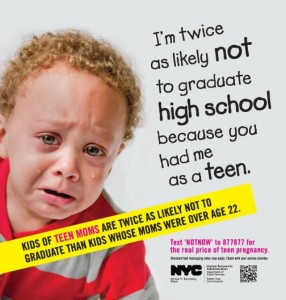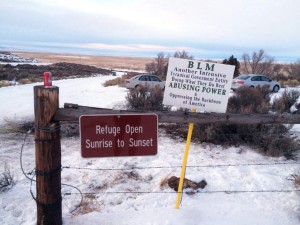
NRA Instructor JB Herren works on a student’s technique.
Photo Friday Harbor Gun Runners
Count me among those who were beyond dismayed to see gun control move back to a central place on the progressive agenda. It’s not that I don’t agree that we’ve got a problem with mass shootings; negligent owners; yahoos with fantasies of fighting tyranny everywhere it rises, including bird sanctuaries; and the general bad effects of a century of Hollywood’s fetishizing of guns as a way to solve conflicts. We have all those problems, and more. The President cries on TV, and I feel his frustration acutely.
Where I diverge from my fellow progressives, though, is in my understanding of gun culture’s nuances — and the ways in which the left misreads (and sometimes, almost willfully and deliberately misunderstands and misrepresents) so much of what goes on in that culture. I grew up in the rural west, where guns signified meat, vermin control, and safety in a house that was 20 miles from the nearest official help. And I own and shoot guns now, an activity that brings me into frequent contact with conservatives in their native habitat. As a result of this lifetime of experience, I know things — about guns, gun laws, and gun owners — that most progressives don’t know.
Some of those things, if better understood, might be leading us toward better policy — if, indeed, better policy is the goal. (I’m not entirely sure it is. Guns, like abortion on the right, have become a useful enough way of whipping up the Democratic base that there are undoubtedly quite a few people on our side who would rather milk the outrage than solve the problem.) There will probably be many blog posts here plowing some of that ground, but I’d like to start off with a little blue-sky proposal — an alternative way of getting us to some seriously effective gun control that the most responsible factions within conservative gun culture would quite possibly actually sign on for voluntarily.
Yes, it’s possible. But it’s going to require that we think about guns, gun ownership, and gun owners’ social responsibilities in a rather different way.
Good Guys With Guns
Invoking “good guys with guns” is a reliable way to raise sniggers on your Facebook feed. But there are deep and important differences between the responsible gun owners — who are involved in vanishingly little gun violence, either intentional or accidental — and the negligent ones, whose errors populate the headlines with all manner of stupidity and malfeasance. There really are two different groups, and gun owners know the difference.
“Responsible owner” isn’t just a slogan. It’s a set of behaviors. Being responsible means that you are properly permitted to own your firearm. On the range, you are scrupulous in following every safety rule. At home, you have a locking safe to store it in that will protect it not just from kids, but also from thieves. You store your ammo in a separate location. When you transport your firearm, you do so in a lawful way. When you carry it, you make damn sure it’s concealed (for your own safety, as well as the peace of mind of others), and that you’re following the laws dictating where you can and can’t have it. (This is a major headache for concealed carriers: there are common situations in which you can literally carry legally on one side of the room, but not the other. Knowing the rules for where you are right now — and how that changes if you go ten feet over there — is a matter of constant awareness and aggravation.) You keep your firearm under your direct personal control at all times, without exception; and knowing the stakes, you take extra pains to keep yourself out of situations where you might have to use it.
Most importantly: you train. And train. And train. And take classes on gun safety, and situational awareness, and tactical skills, and the life-altering legal issues you’ll be faced with should you ever decide to draw the thing. Carrying a gun is, like marriage, not to be entered into unadvisedly or lightly; but reverently, discreetly, advisedly, soberly, and in the fear of God. It’s a rather awesome and grave responsibility, and you take it seriously. If all of this is too much hassle for you right now, then as a responsible owner, you put the thing away in the vault, or sell it. There’s no halfway point.
Those of us who drive cars and fly planes and raise kids and take on other kinds of serious risk in our lives will find this whole drill very familiar. We deal with danger by acquiring the knowledge and skills that will enable us to reduce the risks to acceptable levels. And, by and large, gun owners who take these steps do reduce their risks significantly. Freakonomics’ Stephen Dubner has pointed out that, given that one-third of US homes have guns in them, the surprise is that our rate of death is as low as it is. Apparently, on the whole, American gun owners are pretty darn safe with the things.
The problem is that there’s that other group — the negligent gun owners who want the firearm but won’t (for whatever reason) do any of the risk mitigation that goes along with it. These are the parents who leave their guns loose in the car, or in their purses, where their toddlers can get at them. They’re the young guys who are enchanted by the power, but aren’t old enough to take on the full responsibility; and the bullies and abusers who see a gun as the ultimate tool in their arsenal of intimidation. They’re the criminals whose entire gun ownership experience happens outside of every gun law we have ever passed, or ever will pass (universal background checks will help with this); and the mentally ill whose families see them careening out of control, but can’t do a damn thing about it. Very often, negligent owners live lives that are disorganized in other ways as well: these are the people who simply can’t get it together enough to go to the range, buy a safe, or keep control of their guns. It’s these owners who create the vast bulk of the tragedy we see, and whose behavior we need to be most intently focused on controlling.
Unfortunately, the way the politics of this issue work right now, the responsible gun owners feel forced to defend the rights of the negligent ones because we propose policies that make them feel like we’re lumping them all together. If the good owners don’t defend the bad ones, everybody’s rights are at stake. The result is that knee-jerk Second Amendment absolutism that even a lot of the good owners don’t believe in when they really think about it. The truth is: every gun owner I’ve ever met can name a brother-in-law, godson, or neighbor they think should never be in the same county as a firearm. They know there’s a bright line between Us and Them, and they get really pissed off when liberal policy makers can’t tell the difference. This argument isn’t (always) self-serving on their part, though we often assume that it is.
Rank Has Its Privileges
Alongside this quiet snobbery on the part of the responsible owners, there’s also the fact that gun culture borrows heavily from military culture; and that the conservatives who are drawn to it are big on hierarchy, status, and authority — which also often translates into a love of credentialing and ranking systems. These two traits — an acute awareness of the line between the good guys and bad guys, and a craving for official validation — are the hooks on which a new policy might hang.
In the name of a “well-ordered militia,” we might tell people who want to carry: OK. Here’s the deal. You meet a stiff set of criteria — range qualification at a certain very high standard; regular mandated training to maintain skill; demonstration of safe handling and storage; and a background check that’s clear of felonies and drug or domestic violence misdemeanors — and you will get a permit that allows you to carry nationwide, in most times and places, no questions asked. (For most owners, simply being subject to one federal standard instead of rules that change at every city line would be well worth a large amount of pain.) But this permit comes with a responsibility: you are now part of a semi-official posse (modeled, perhaps, on the Civil Air Patrol) that also requires that you take regular mandated training and be prepared to perform certain community services in exchange for this privilege. (What services? At this point, I’m leaving that open, but there’s certainly plenty to be done.)
Most of the gun guys I know would positively leap at this deal. They like the metaphor, popularized by Lt. Colonel Dave Grossman, of themselves as loyal sheepdogs — defenders of the public order, set to preserve the safety of the larger whole against the predators in our midst. (Yes. In this scenario, the rest of us are the sheep. Charming, isn’t it?) The enhanced permit requires them to enlarge their sense of what that duty entails, and fixes their firearms into that larger context of service to society. It would give them a meaningful credential, tangibly recognize their commitment to responsible ownership, and put a community of accountability around them for their behavior with guns. With expanded freedom would come expanded responsibility — an exchange that most of them would understand, and possibly even welcome.
More broadly, over time, this scheme would put the whole cultural meaning of gun ownership into a wider social context. No longer a weird fetish for loners, carrying a firearm is a right that should only be exercised by people who are willing to work with others and commit themselves to the greater good. Membership in this group would be suspended immediately if you were involved in a negligent discharge; if you were convicted of a felony, or a misdemeanor involving drugs or violence; or if you could no longer participate in required trainings or pass the qualifications. (Those familiar with the history of the National Guard may recognize this proposal, because the Guard was originally formed out of state militias that once occupied a similar role.)
Politically, this plan would also create much greater distance between the interests of committed and negligent owners. Once the committed owners felt safe and protected, they’d have a lot less interest in defending the indefensible behavior of their less-conscientious peers. “Of course that crazy guy deserves to be prosecuted: he didn’t meet the high standards I had to, so he never should have had the damn thing in the first place.” They sort of secretly think this now, but there’s too much political downside to say it out loud.
Over time, this could also swing the balance of the internal culture of the NRA. Right now, the nation’s leading exponents of safe gun ownership are the NRA-certified instructors found at practically every gun range — a large and influential faction that still carries forward the organization’s historic tradition as a firearms safety group. Requiring all owners to have more extensive training would be a full-employment act for those instructors (most of whom already believe that the average American is woefully under-skilled and dangerous), so they’d wholeheartedly support this idea. To be sure: the NRA’s gun-manufacturing sugar daddies, who fund the lobbying operation, would still have a different agenda; but this proposal would restore considerable clout to the association’s education and training arm, which over the long haul could bring them back around to their historically saner and more positive view of firearms regulation.
Idaho: More than potatoes and patriots
This isn’t really as blue-sky as it sounds. There’s already an experiment being run along these lines. The Holy Grail of gun permits right now is the Idaho Enhanced concealed carry permit — a special license granted by the state of Idaho that demands the highest standard of training and range qualification of any permit granted in the US. Because the standards are high, the Idaho permit is honored by 37 other states, making it the closest thing to a universal permit in the US. Among gun folks, it’s the most prestigious credential you can get, and therefore carries tremendous status. And because the permit can be issued to non-Idaho residents, Idaho is making a bundle off the permit fees from out-of-staters stampeding to get theirs.
The Idaho experiment is still in its early stages. But the early data seems to prove out my suggestion that responsible gun owners respond well to appeals to their love of recognition and status, and are motivated to meet high standards in order to get a credential that signifies their skill. This is an understanding that far more policy could be built on.
And the downsides…
No policy proposal is without its downsides, and to be sure, this one has its flaws. There’s no doubt that some bad actors will manage to qualify for a high-status posse permit, if only for a while. George Zimmerman, as a neighborhood watch leader, might well have been the kind of guy who went out of his way to qualify for this; and it would be a magnet for the kind of cop-wannabe who can’t quite make the cut for the academy. Mechanisms would have to be put in place to cull such people out, or use social pressure to direct their issues toward the common good.
It’s also extremely likely that this system would be gamed in ways that re-create the racism and classism that have been embedded in every gun law America has ever passed. It’s true that the kind of disorganized lifestyle that leads to negligent ownership correlates strongly with socioeconomic status: if you’re too poor to buy a safe, or too stressed to keep track of your gun, or too busy surviving to keep your paperwork in order and keep up with your qualification requirements, you’re going to find yourself every bit on the wrong side of this system as you are in our current one. (And, frankly: if your life is that far out of control, do we really want you owning a gun?) Police and court harassment of African-Americans and Latinos mean that they’re far more likely to have criminal records that would be disqualifying, reducing eligibility throughout those communities. We would have to take aggressive steps to ensure that most Americans could readily access these permits, and that getting one would be more a matter of time and effort than money.
But empowering the better angels of the gun community, and affirming their own instincts toward more safety, better training, and careful credentialing, might be a way of de-escalating the growing polarization over this issue.
Update: Commenter Raven On The Hill links to this excellent article by Jim Wright of Stonekettle Station (which belongs on my blogroll, actually — Wright’s a favorite in this house) offering another perspective on effective gun policy that the NRA probably wouldn’t bother to fight.












